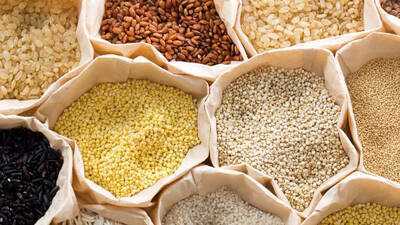
Millets also known as mota Anaj have been one of the most consumed grains across India, but with growing awareness about health and wellness these grains have made a comeback for their umpteen health benefits. Here’s all you need to know about millets and why these grains are great for patients struggling with blood sugar. Read on to find out…
Foxtail Millet
Foxtail millet is one of the oldest and most commonly cultivated millets worldwide. With a GI ranging from 50 to 55, it falls into the low-GI category, making it a great option for those monitoring blood sugar. Its high fiber content slows sugar absorption into the bloodstream, helping to prevent blood sugar spikes. In addition to fiber, foxtail millet is packed with protein and essential amino acids, making it a nutritious, low-GI choice for anyone looking to boost their diet.
Pearl Millet (Bajra)
Pearl millet, or Bajra as it’s called in India, has a glycemic index of around 50. It’s loaded with magnesium, phosphorus, and iron, minerals that support blood sugar control and overall well-being. The high fiber in pearl millet also promotes healthy digestion and a feeling of fullness, making it easier to manage your hunger and maintain stable glucose levels throughout the day.
Kodo Millet
Kodo millet is another great low-GI option, with a glycemic index around 50. This grain is rich in antioxidants, which help reduce inflammation and support heart health. The high fiber content ensures that Kodo millet digests slowly, allowing for a gradual release of sugars into the bloodstream, which helps prevent sudden blood sugar spikes.
Barnyard Millet
Barnyard millet has one of the lowest glycemic indexes of all millets, ranging from 40 to 50. This makes it a top pick for diabetics or anyone looking to stabilize their blood sugar. In addition to its low GI, barnyard millet is high in fiber, which aids in digestion and helps regulate blood sugar. It’s also a good source of B vitamins, calcium, and iron, providing additional health benefits beyond just blood sugar management.
Little Millet
Little millet has a glycemic index of about 50, which makes it a suitable option for those trying to keep their blood sugar levels in check. Its fiber content helps slow digestion, keeping you fuller for longer and maintaining stable blood sugar levels. Additionally, little millet is high in protein and contains essential amino acids, making it an excellent alternative to rice or wheat in your meals.
Sorghum (Jowar)
Although technically not a millet, sorghum (or Jowar) is often grouped with them due to its similar nutritional profile. Sorghum has a glycemic index of around 52, making it another low-GI choice. This gluten-free grain is rich in antioxidants, fiber, and important minerals like magnesium and iron. These nutrients work together to help regulate blood sugar levels and promote heart health.
 Millets also known as mota Anaj have been one of the most consumed grains across India, but with growing awareness about health and wellness these grains have made a comeback for their umpteen health benefits. Here’s all you need to know about millets and why these grains are great for patients struggling with blood sugar. Read on to find out…
Millets also known as mota Anaj have been one of the most consumed grains across India, but with growing awareness about health and wellness these grains have made a comeback for their umpteen health benefits. Here’s all you need to know about millets and why these grains are great for patients struggling with blood sugar. Read on to find out…